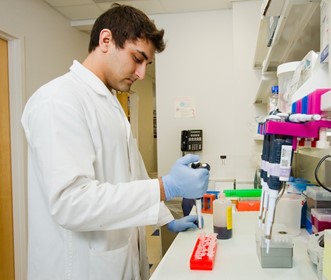Brenda McGrane of Iowa graduated from cytology school at the Mayo Clinic, worked at several prestigious medical clinics, and obtained her alma mater at Stanford University Health Center. In the following article, Brenda McGrane discusses what is involved in esophageal cancer screenings and why they are so important.
More often found in men, esophageal cancer is a disease in which cancer cells build up in the tissue of the esophagus. Barrett esophagus, smoking, and heavy alcohol consumption all increase the risk of developing this disease, but esophageal cancer screenings could help save countless lives.
Brenda McGrane of Iowa reports that the brains at the National Cancer Institute clarify that there currently aren’t any routine/standardized screenings for esophageal cancer. However, the development of such tests is now underway, and will eventually allow people to catch these formations early on to improve outcomes.
Growing Importance in Recent Years
Brenda McGrane of Iowa explains that screenings allow health practitioners to find cancer before the patient exhibits any symptoms. Upon discovering malignant tissue early on, it may be significantly easier to treat, thus ensuring that more people end up beating the disease.
While there aren’t any routine tests in the United States of America for detecting this cancer early, scientists are working towards understanding who is more likely to contract specific cancer types. Experts say that this information is what doctors use to determine who should go in for screening, which tests to use, and how often they should be performed.
Despite the lack of standardized screenings, they have innumerable benefits, such as decreasing the patient’s chance of dying from the disease, living longer, and improving recovery chances.
The Esophageal Cancer Screening Process
Screening methods are abundant. In the US, the following are being studied or utilized to screen for esophageal cancer:
Esophagoscopy
Otherwise known as an endoscopic examination or endoscopy, esophagoscopy is used to look inside the esophagus. It’s perhaps the most commonly used screening method at this time.
Brenda McGrane of Iowa explains an esophagoscope (a thin tube with a light and lens) is inserted through the nose or mouth, down the throat, and into the esophagus.
While inside, practitioners may perform the following tests:
Biopsy
Brenda McGrane notes that some esophagoscopes also include an instrument for removing tissues or cells for a pathologist to later view under a microscope. Upon viewing, they can determine whether there are any signs of cancer in these cells via biopsy.
Balloon Cytology
In this screening method, the patient will swallow a deflated balloon. The practitioner then inflates it before pulling it from the esophagus.
Cells collect on the surface of the balloon from the lining of the esophagus, and then these cells are viewed under a microscopic to check for abnormalities.
Fluorescence Spectroscopy
Brenda McGrane of Iowa says that, as the name suggests, fluorescence spectroscopy utilizes a special light with an endoscope to illuminate the lining of the esophagus. Under this light, malignant tissue gives off less light than regular tissue.
 Brush Cytology
Brush Cytology
Like biopsies, brush cytology are typically conducted at the same time as esophagoscopies. The practitioner brushes cells from the esophagus’ lining and then inspects them under a microscope.
It’s Not Without Risks
Brenda McGrane of Iowa explains that despite the clear benefits (catching cancer early for quick benefits), screening carries its own risks, making the decision of whether or not to conduct the test at all into a tricky one.
Each screening method is invasive, presenting a myriad of possible side effects for certain patients, such as:
- Heart attackBreathing problems
- Esophagus puncture (a tiny hole in the esophagus)
- Vomit, water, food, or stomach acid in the airway
- Internal bleeding
Brenda McGrane of Iowa says that while the above occurrences are rare, they’re evidently quite serious. Thus, experts recommend that patients talk with their doctor before agreeing to screenings.
Practitioners state some other risks to be aware of:
- False negatives — Cancer could potentially be undetected by the esophageal screening. Individuals who receive false negatives will experience a delay with acquiring the medical attention they need, even if symptoms present themselves.
- False positives — On the other hand, false positives occur when a screening detects cancer that isn’t really there, resulting in unnecessary patient anxiety and more risk-carrying tests.
- May not improve health or help people live longer — If the esophageal cancer is advanced, or it has spread to other regions, the screening may not end up helping to preserve life or improve health.
Nevertheless, Screenings Are an Important Addition to Healthcare and At-Risk Individuals
While the risks with esophageal cancer screenings shouldn’t be ignored, they are of paramount importance to those that are likely to develop the disease. Smoking or heavily consuming alcohol are two factors which drastically increase one’s likelihood of developing cancer, meaning these individuals are also more likely to be offered screenings.
Brenda McGrane of Iowa says that it is ultimately the patient’s decision whether they would like to undergo such tests. However, esophageal cancer screenings do have the power to prolong life and improve health outcomes if they catch the disease in its early stages.
References
https://www.cancer.gov/types/esophageal/patient/esophageal-screening-pdq
https://www.cancer.net/cancer-types/esophageal-cancer/screening








